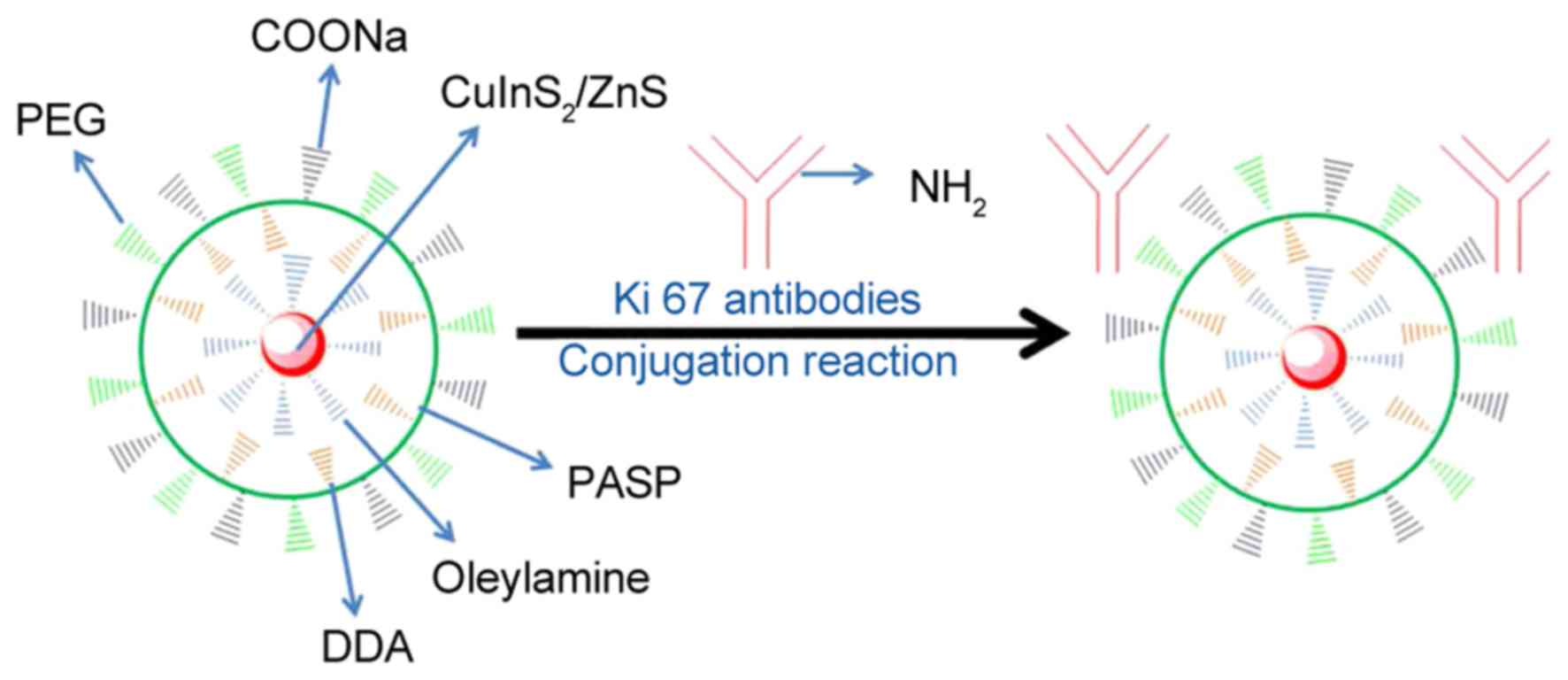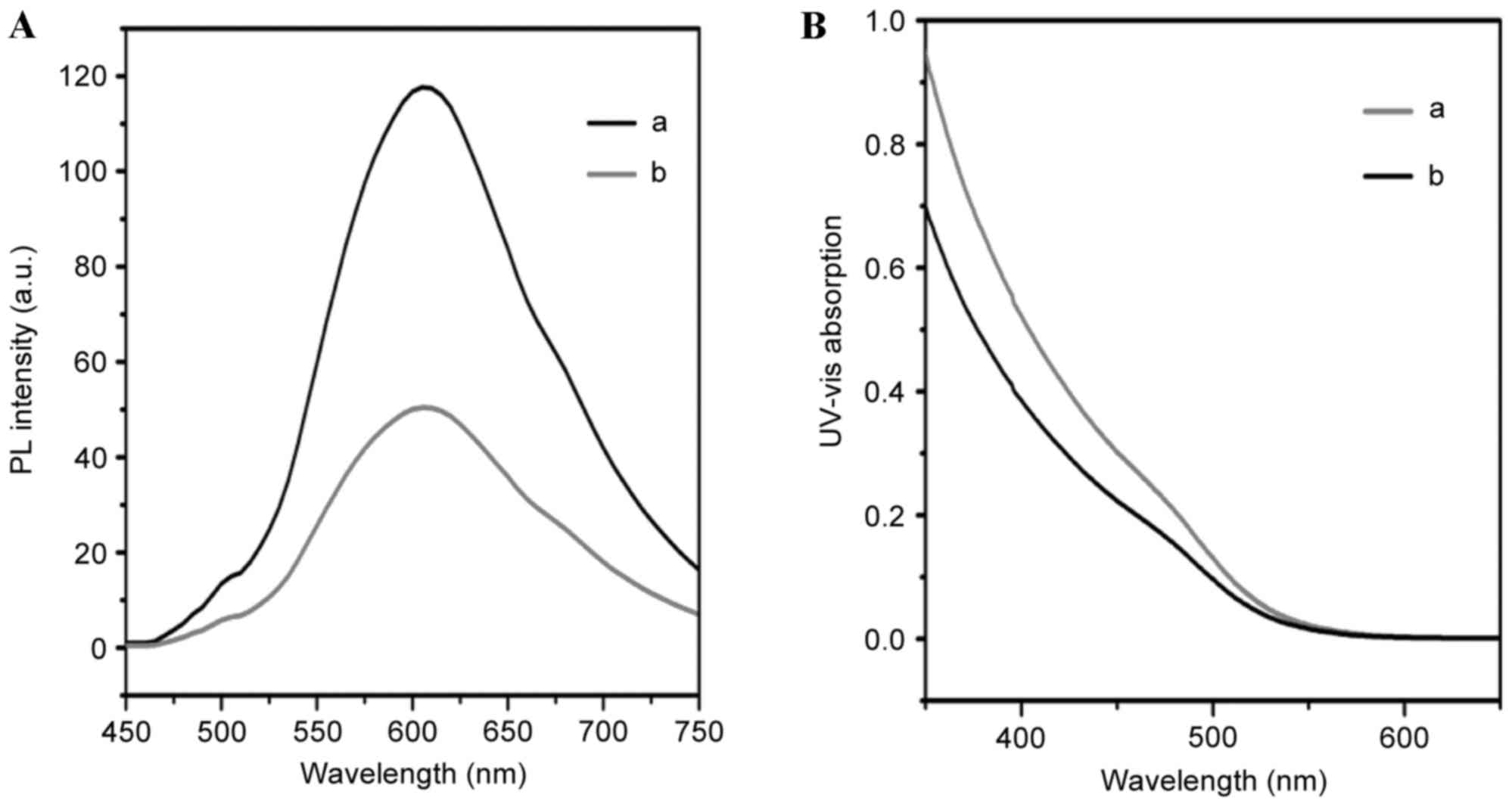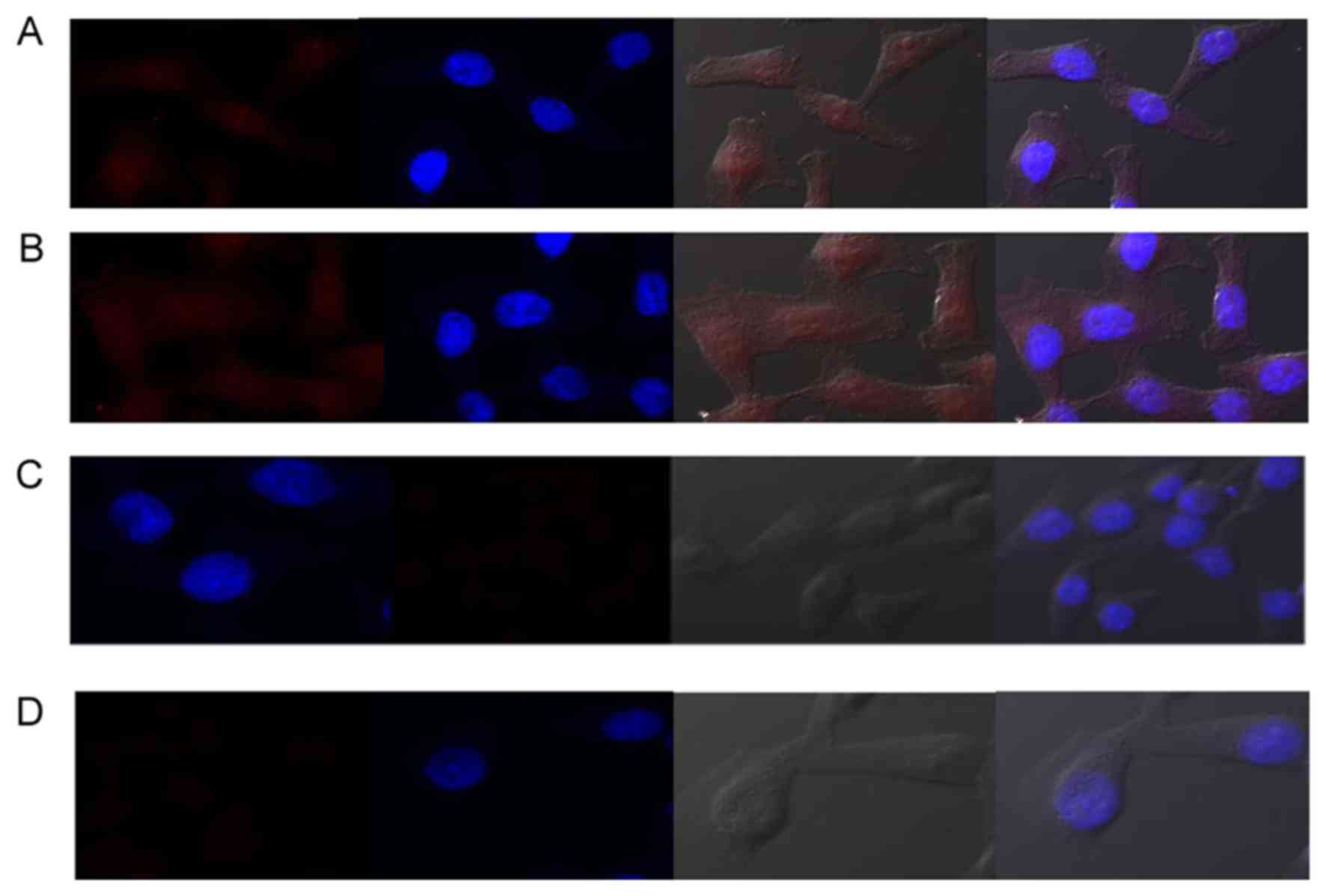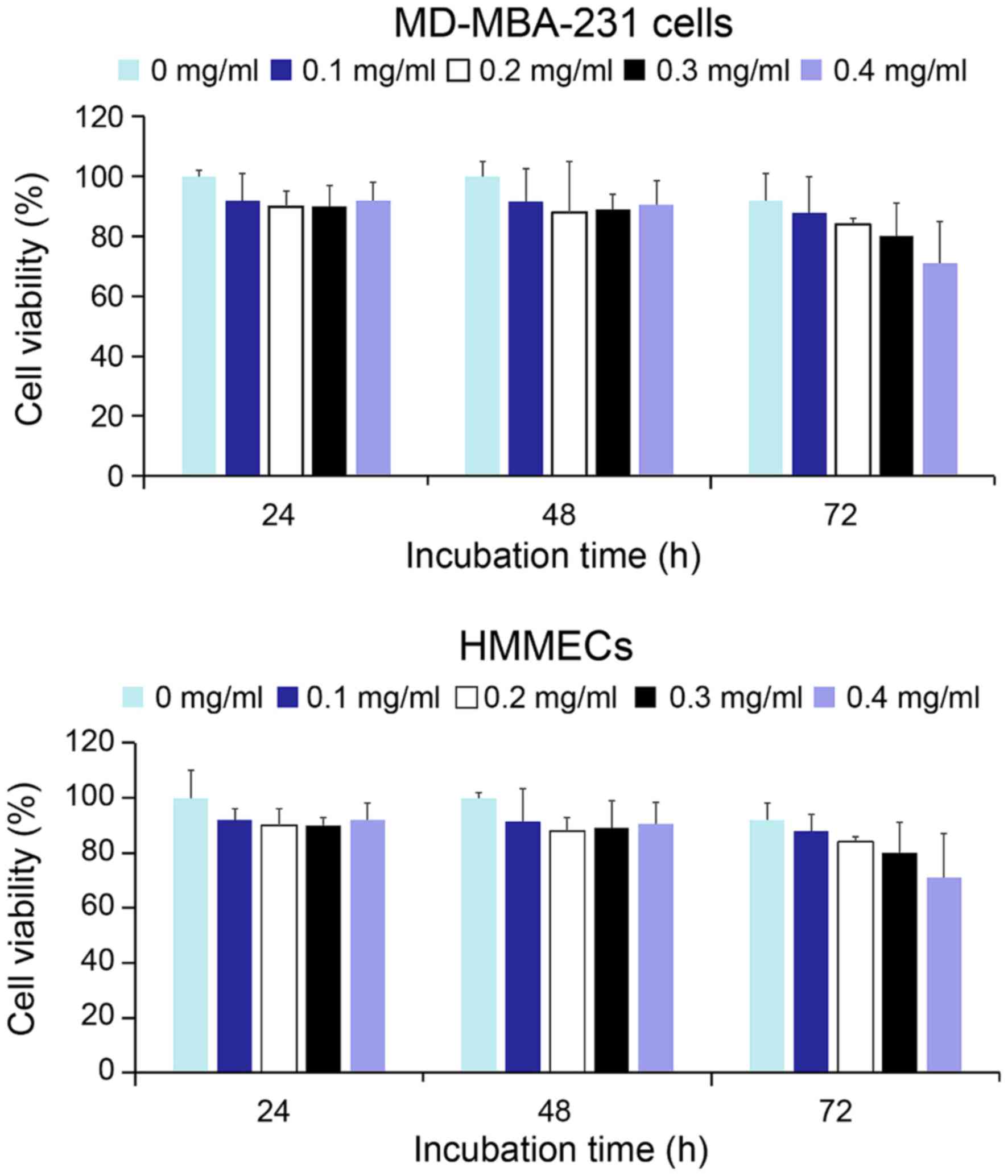|
1
|
Jemal A, Bray F, Center MM, Ferlay J, Ward
E and Forman D: Global cancer statistics. CA Cancer J Clin.
61:69–90. 2011. View Article : Google Scholar : PubMed/NCBI
|
|
2
|
Soerjomataram I, Louwman MW, Ribot JG,
Roukema JA and Coebergh JW: An overview of prognostic factors for
long-term survivors of breast cancer. Breast Cancer Res Treat.
107:309–330. 2008. View Article : Google Scholar : PubMed/NCBI
|
|
3
|
Gerdes J, Schwab U, Lemke H and Stein H:
Production of a mouse monoclonal antibody reactive with a human
nuclear antigen associated with cell proliferation. Int J Cancer.
31:13–20. 1983. View Article : Google Scholar : PubMed/NCBI
|
|
4
|
Lopez F, Belloc F, Lacombe F, Dumain P,
Reiffers J, Bernard P and Boisseau MR: Modalities of synthesis of
Ki-67 antigen during the stimulation of lymphocytes. Cytometry.
12:42–49. 1991. View Article : Google Scholar : PubMed/NCBI
|
|
5
|
Yerushalmi R, Woods R, Ravdin PM, Hayes MM
and Gelmon KA: Ki67 in breast cancer: Prognostic and predictive
potential. Lancet Oncol. 11:174–183. 2010. View Article : Google Scholar : PubMed/NCBI
|
|
6
|
Cheang MC, Chia SK, Voduc D, Gao D, Leung
S, Snider J, Watson M, Davies S, Bernard PS, Parker JS, et al: Ki67
index, HER2 status, and prognosis of patients with luminal B breast
cancer. J Natl Cancer Inst. 101:736–750. 2009. View Article : Google Scholar : PubMed/NCBI
|
|
7
|
Yamamoto S, Ibusuki M, Yamamoto Y, Fu P,
Fujiwara S, Murakami K and Iwase H: Clinical relevance of Ki67 gene
expression analysis using formalin-fixed paraffin-embedded breast
cancer specimens. Breast Cancer. 20:262–270. 2013. View Article : Google Scholar : PubMed/NCBI
|
|
8
|
Goldhirsch A, Wood WC, Coates AS, Gelber
RD, Thürlimann B and Senn HJ: Panel members: Strategies for
subtypes-dealing with the diversity of breast cancer: Highlights of
the St gallen international expert consensus on the primary therapy
of early breast cancer 2011. Ann Oncol. 22:1736–1747. 2011.
View Article : Google Scholar : PubMed/NCBI
|
|
9
|
Alivisatos P: The use of nanocrystals in
biological detection. Nat Biotechnol. 22:47–52. 2004. View Article : Google Scholar : PubMed/NCBI
|
|
10
|
Michalet X, Pinaud FF, Bentolila LA, Tsay
JM, Doose S, Li JJ, Sundaresan G, Wu AM, Gambhir SS and Weiss S:
Quantum dots for live cells, in vivo imaging, and diagnostics.
Science. 307:538–544. 2005. View Article : Google Scholar : PubMed/NCBI
|
|
11
|
Alivisatos A, Gu W and Larabell C: Quantum
dots as cellular probes. 7:55–76. 2005.
|
|
12
|
Zrazhevskiy P, Sena M and Gao X: Designing
multifunctional quantum dots for bioimaging, detection, and drug
delivery. Chem Soc Rev. 39:4326–4354. 2010. View Article : Google Scholar : PubMed/NCBI
|
|
13
|
Bentolila L, Ebenstein Y and Weiss S:
Quantum dots for in vivo small-animal imaging. J Nucl Med.
50:493–496. 2009. View Article : Google Scholar : PubMed/NCBI
|
|
14
|
He X, Gao J, Gambhir SS and Cheng Z:
Near-infrared fluorescent nanoprobes for cancer molecular imaging:
Status and challenges. Trends Mol Med. 16:574–583. 2010. View Article : Google Scholar : PubMed/NCBI
|
|
15
|
Hilderbrand SA and Weissleder R:
Near-infrared fluorescence: Application to in vivo molecular
imaging. Curr Opin Chem Biol. 14:71–79. 2010. View Article : Google Scholar : PubMed/NCBI
|
|
16
|
Byers RJ and Hitchman ER: Quantum dots
brighten biological imaging. Prog Histochem Cytochem. 45:201–237.
2011. View Article : Google Scholar : PubMed/NCBI
|
|
17
|
Wang Y and Chen L: Quantum dots, lighting
up the research and development of nanomedicine. Nanomedicine.
7:385–402. 2011. View Article : Google Scholar : PubMed/NCBI
|
|
18
|
Huang H, Li Y, Sun X, Lv Y, Chen L and
Wang J: Preparation and biological characterization of
pH-responsive PASP-g-PEG-DDA-Hyd-ADR. New J Chem. 37:1623–1629.
2013. View Article : Google Scholar
|
|
19
|
Sun T, Li K, Li Y, Li C, Zhao W, Chen L
and Chang Y: Optimizing conditions for encapsulation of QDs by
varying PEG chain density of amphiphilic centipede-like copolymer
coating and exploration of QDs probes for tumor cell targeting and
tracking. New J Chem. 36:2383–2391. 2012. View Article : Google Scholar
|
|
20
|
Sun X, Li Y, Huang H, Yang B and Wang Y:
Synthesis and application of a targeting diagnosis system via
quantum dots coated by amphiphilic polymer for the detection of
liver cancer cells. Luminescence. 29:831–836. 2014. View Article : Google Scholar : PubMed/NCBI
|
|
21
|
Hardman R: A toxicologic review of quantum
dots: Toxicity depends on physicochemical and environmental
factors. Environ Health Perspect. 114:165–172. 2006. View Article : Google Scholar : PubMed/NCBI
|
|
22
|
Yu WW, Chang E, Drezek R and Colvin VL:
Water-soluble quantum dots for biomedical applications. Biochem
Biophys Res Commun. 348:781–786. 2006. View Article : Google Scholar : PubMed/NCBI
|
|
23
|
Hoshino A, Fujioka K, Oku T, Suga M,
Sasaki YF, Ohta T, Yasuhara M, Suzuki K and Yamamota K:
Physicochemical properties and cellular toxicity of nanocrystal
quantum dots depend on their surface modification. Nano Lett.
4:2163–2169. 2004. View Article : Google Scholar
|
|
24
|
Ryman-Rasmussen JP, Riviere JE and
Monteiro-Riviere NA: Surface coatings determine cytotoxicity and
irritation potential of quantum dot nanoparticles in epidermal
keratinocytes. J Invest Dermatol. 127:143–153. 2007. View Article : Google Scholar : PubMed/NCBI
|
|
25
|
Lee J, Ji K, Kim J, Park C, Lim KH, Yoon
TH and Choi K: Acute toxicity of two CdSe/ZnSe quantum dots with
different surface coating in Daphnia magna under various light
conditions. Environ Toxicol. 25:593–600. 2010. View Article : Google Scholar : PubMed/NCBI
|
|
26
|
Ishiyama M, Tominaga H, Shiga M, Sasamoto
K, Ohkura Y and Ueno K: A combined assay of cell viability and in
vitro cytotoxicity with a highly water-soluble tetrazolium salt,
neutral red and crystal violet. Biol Pharm Bull. 19:1518–1520.
1996. View Article : Google Scholar : PubMed/NCBI
|
|
27
|
Tominaga H, Ishiyama M, Ohseto F, Sasamoto
K, Hamamoto T, Suzuki K and Watanabe M: A water-soluble tetrazolium
salt useful for colorimetric cell viability assay. Anal Commun.
36:47–50. 1999. View
Article : Google Scholar
|
|
28
|
Cho SJ, Maysinger D, Jain M, Röder B,
Hackbarth S and Winnik F: Long-term exposure to CdTe quantum dots
causes functional impairments in live cells. Langmuir.
23:1974–1980. 2007. View Article : Google Scholar : PubMed/NCBI
|
|
29
|
Qi Q, Liu X, Li S, Joshi HC and Ye K:
Synergistic suppression of noscapine and conventional
chemotherapeutics on human glioblastoma cell growth. Acta Pharmacol
Sin. 34:930–938. 2013. View Article : Google Scholar : PubMed/NCBI
|
|
30
|
Inwald EC, Klinkhammer-Schalke M,
Hofstädter F, Zeman F, Koller M, Gerstenhauer M and Ortmann O:
Ki-67 is a prognostic parameter in breast cancer patients: Results
of a large population-based cohort of a cancer registry. Breast
Cancer Res Treat. 139:539–552. 2013. View Article : Google Scholar : PubMed/NCBI
|
|
31
|
Jerjees DA, Alabdullah M, Green AR,
Alshareeda A, Macmillan RD, Ellis IO and Rakha EA: Prognostic and
biological significance of proliferation and HER2 expression in the
luminal class of breast cancer. Breast Cancer Res Treat.
145:317–330. 2014. View Article : Google Scholar : PubMed/NCBI
|
|
32
|
Hines DA and Kamat PV: Recent advances in
quantum dot surface chemistry. ACS Appl Mater Interfaces.
6:3041–3057. 2014. View Article : Google Scholar : PubMed/NCBI
|
|
33
|
Durisic N, Godin AG, Walters D, Grütter P,
Wiseman PW and Heyes CD: Probing the ‘dark’ fraction of core-shell
quantum dots by ensemble and single particle pH-dependent
spectroscopy. ACS Nano. 5:9062–9073. 2011. View Article : Google Scholar : PubMed/NCBI
|
|
34
|
Boldt K, Bruns OT, Gaponik N and
Eychmüller A: Comparative examination of the stability of
semiconductor quantum dots in various biochemical buffers. J Phys
Chem B. 110:1959–1963. 2006. View Article : Google Scholar : PubMed/NCBI
|













